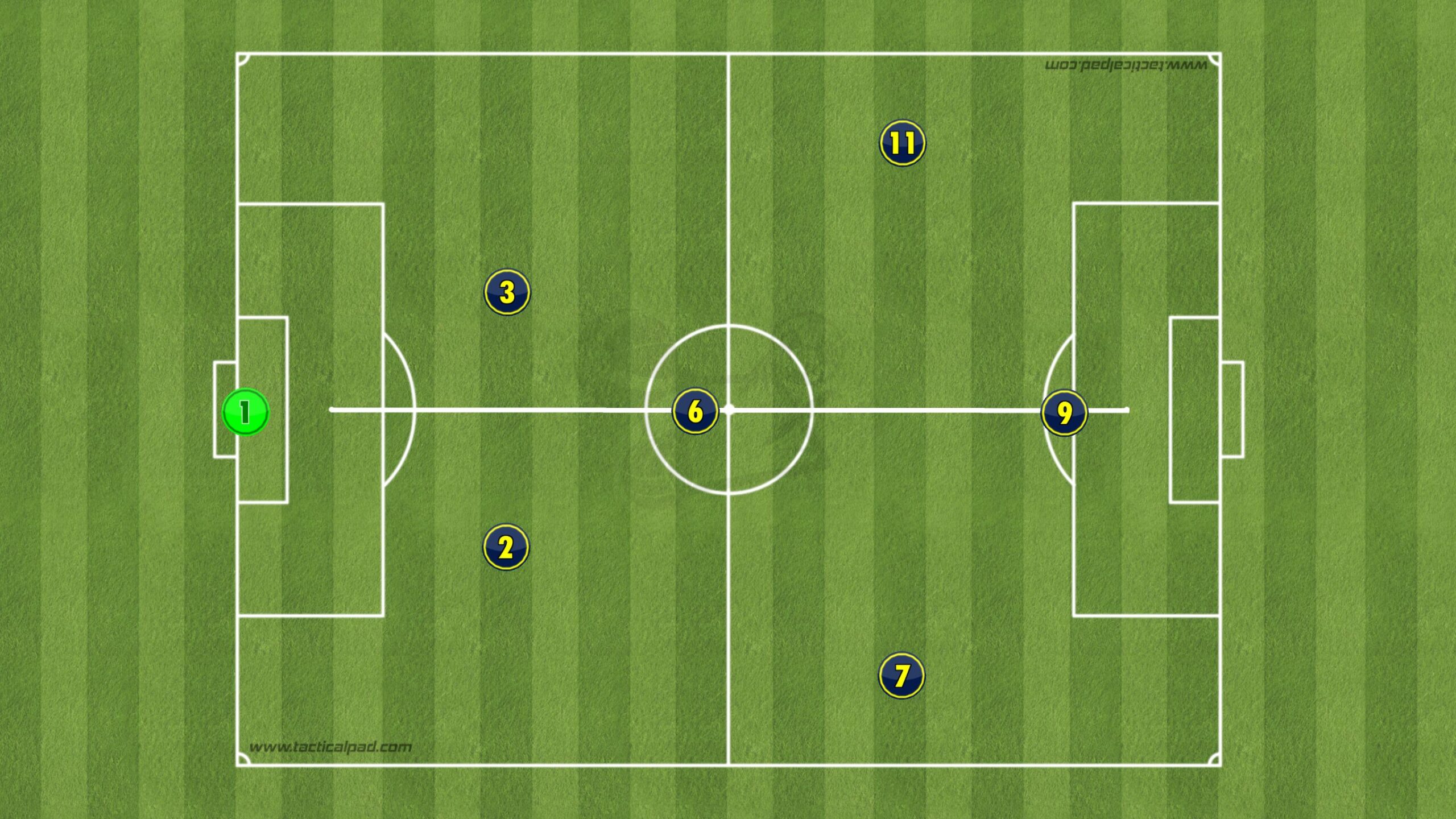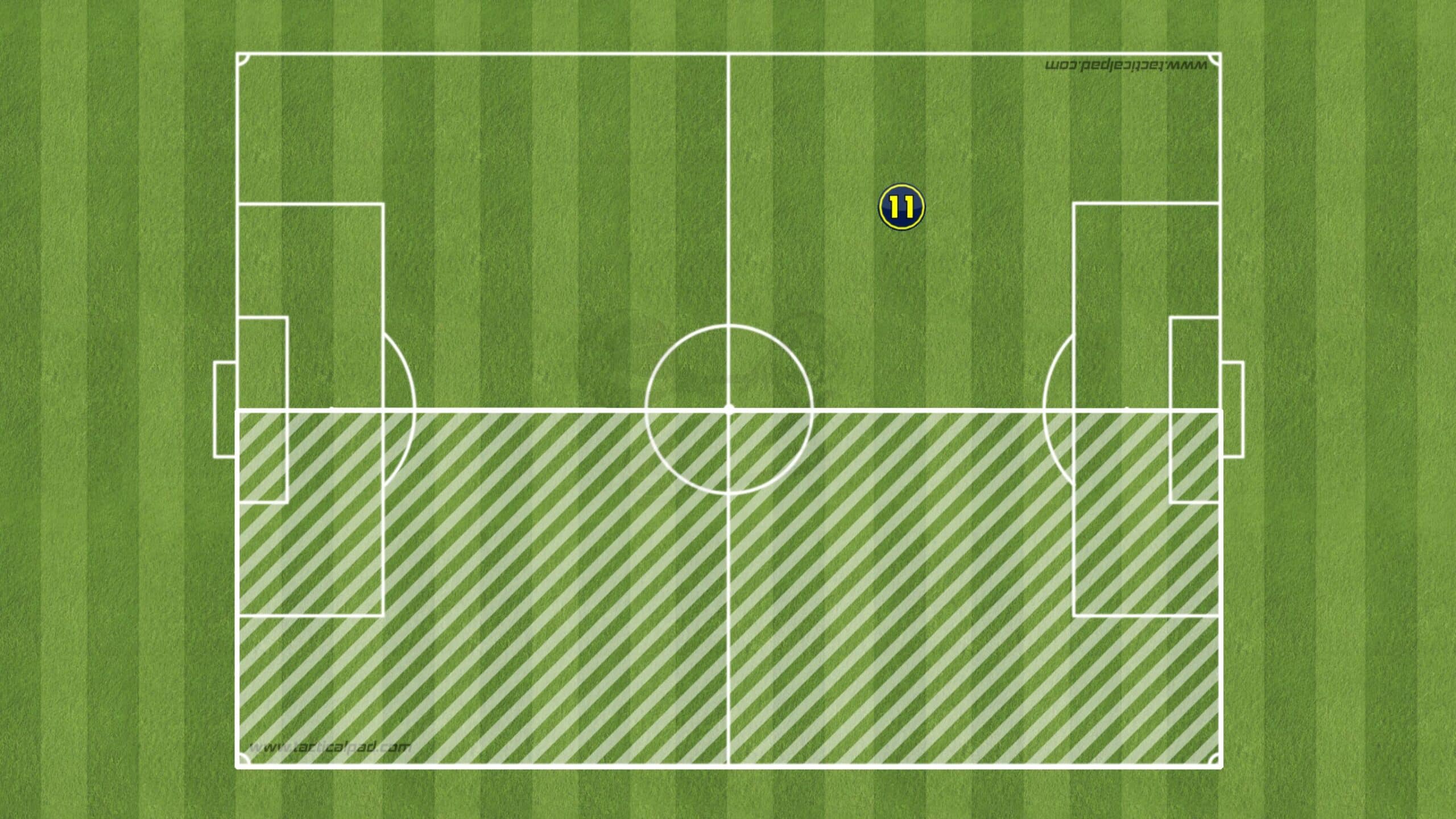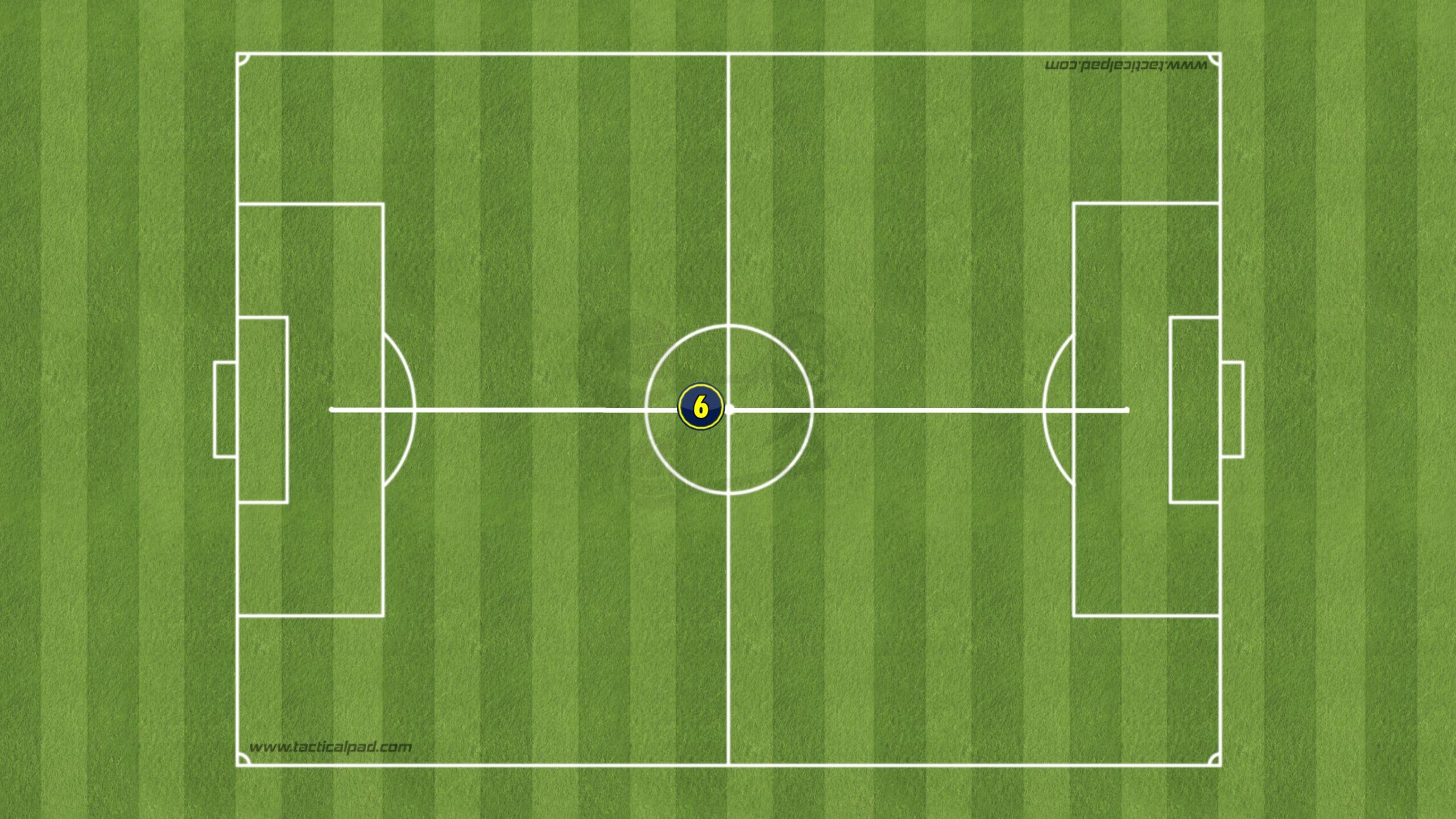Coaching team shape to 7 v 7 teams is a debate that will never go away. For some, it is an aberration to even consider it. While I understand the mindset behind this, a trip to one of the most prestigious Academies in the world means I beg to differ. Done in moderation, shape training can have some incredible benefits to your players soccer education.
We are all aware that our season plans should mostly consist of a focus on technique and decision-making. After all, these are the ages where learning technique & skill is at its most capable. By helping players understand the shape of the team, we will provide them with more opportunities to work on those skills. For example, when players have the opportunity to play on the wing, staying wide will likely create more 1v1 situations for them. Thus, the chances for them to work on their ability to beat an opponent in a game increases.
I have also noted that by giving players as young as U8 this structure, that players will naturally see when they can rotate positions in a passage of play. For example, a game last year saw one of my U9 boys drop back into defense to cover the right back who had dribbled the ball forward. This was not something I had coached, simply something that they observed.
With most coaches having 1 or 2 sessions a week maximum, limit playing an extended 7 v 7 game in practice to once every 3 weeks. Dedicate 30 minutes of a session to it, but make sure the players have the last 10 minutes to play without coach interference.
And of course, don’t pigeon hole players! Make sure that all players get the chance to play in all positions.
Set Up

Set up a 6 v 6 game. If you have enough players to play 7 v 7 then do so. If not, set a condition where players can only score in the opposition’s penalty area, or play with keepers and remove the position you think needs the least support.
Decide on your preferred formation – the one above is a 2-1-3 – and make sure both teams are playing the same.
Place a line of cones down the middle of the field, from penalty spot to penalty spot. Used in conjunction with the half way line, this splits the field into 4 quarters.
The quarters are to provide a clear visual aid for players to understand which areas of the field they should cover depending on the position they are playing in.
Positions

Make sure each player is aware of the quarters of the field you want them cover, based on their position. In the diagram above, the Left Winger has been asked to cover the 2 quarters on the left-hand side of the line of cones. They would be informed that they are not to cross the line of cones for varying reasons, depending on the situation.

Which quarters your defenders cover is dependent on your coaching philosophy. My preference is to treat them as Full Backs. I have found that the earlier players can get used to attacking on the overlap, the easier it is to have them do it in games as they get older. Though this may mean conceding goals at U8 due to 1 defender being left on their own, I am confident of the long-term benefits of this mentality.
At U8-U10 especially, a lot of players I have come across see being a defender as a punishment. They are of the belief that playing there means they stay back at all costs. Using your defenders as full backs instead of centre backs will help eliminate this thought process.
However, if you don’t feel comfortable with that, have your defenders cover the 2 quarters in the defensive half of the field.

The only player who is given a license to cover all 4 quarters is the Central Midfielder. This highlights an important reason for rotating positions at the foundation ages. A U8 being expected to run themselves ragged for 40 minutes is ludicrous. By switching the positions around allows the players to use their energy reserves more appropriately.

With these ideas in mind, you shape would ideally look like the above diagram when your team has the ball in the opponents’ half
Left Back – Has stayed on their side of the line of cones and has no further than the half way line to protect the goal
Right Back – Has moved into their attacking quarter, available for a pass back or to make an overlapping run if the winger moves inside
Central Midfield – Has crept into the quarter with the ball, making it wide along with the winger.
Left Winger – Has stayed on their side of the line of cones. This player is ready for any ball that comes to the far post and to make the field wide if the ball moves that way
Right Winger – Is on the ball and is making the field wide. They are the key decision-maker here – should they dribble, pass or try to score
Striker – Staying central, closer to the goal then anyone. They are ready for any pass that comes in and can also move towards the right winger to support them.
Coaching Tips
Be patient. The first U8 team I attempted this with (playing 6v6 at the time) took 6 months before they unconsciously set themselves up like this in games
Ask your club/league if you can paint a line from penalty spot to penalty spot on the field for games. This gives your players the visual aid to help them in games
If your team are advanced, split the field into 6 or 9 sections, and be more specific with what you want from them.
Ask questions in games as to where they should be positioned, but leave the decision-making on the ball to the players
